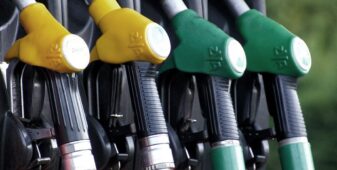Insight Focus
- CBAM requires some imports to declare embedded carbon emissions.
- They then pay a levy based on the EU’s carbon allowance price.
- Steel, iron, cement, chemicals, fertiliser and electricity are all covered.
The European Union this month approved legislation setting up a Carbon Border Adjustment Mechanism (CBAM), a tax on the carbon content of imported raw materials, that is likely to shake up international trade and may lead to similar measures being implemented elsewhere.
The CBAM will require importers of selected materials – steel and iron, cement, chemicals, fertiliser and electricity in the first instance – to declare the carbon emissions “embedded” in their production and to pay a levy corresponding to the EU’s own carbon allowance price.
The goal of the new levy is both to protect EU industry from competition that does not need to pay a cost of carbon, and reduce the likelihood of EU industry relocating abroad, as well as to encourage more countries to implement climate-friendly policies and help achieve the goals of the 2015 Paris Agreement.
Heavy industry in Europe is subject to the bloc’s Emissions Trading System, which sets an absolute cap on the amount of CO2 that can be emitted each year by more than 11,000 installations in 27 member countries, as well as four other members of the European Economic Area.
Companies must buy EU emission allowances (EUAs) representing the legal permission to emit CO2, and surrender as many allowances as they emit tonnes of CO2 each year. The current price of permits is €80/tonne.
Until now, so-called energy-intensive and trade-exposed industries in the EU have been protected from international competition and the risk of carbon “leakage” by receiving a large tranche of free EUAs each year. The logic is that because most international exporters to Europe do not work under a carbon pricing regime, their costs are lower compared to their EU counterparts.
However, with the advent of CBAM this distinction will be removed, as exports to Europe will also become subject to a carbon price.
Imports into the EU will be assessed on the basis of their carbon content, and importers will be required to purchase CBAM certificates equivalent to the calculated emissions inherent in the materials. Products from countries which impose a carbon price equivalent to the EU’s would be given an exemption to the CBAM levy, since they already incorporate the cost of emissions.
As the CBAM rate is introduced and gradually increased over time, the amount of free EUAs handed to European producers will be reduced, so that the same proportion of imported and locally produced materials are subject to a carbon price. The introduction of CBAM will begin in 2025 and increase by 10% each year, so that full coverage is achieved by 2035.
CBAM certificates will be priced dynamically: they will be sold at the average price realised in EUA auctions each week, giving importers some degree of latitude in deciding when to buy.
CBAM certificates will not be fungible with the wider EU ETS market, and will not be tradable, but unused certificates will be bought back by the European Commission.
EU ETS stakeholders believe that importers will take advantage of the link in prices between CBAM and the EU ETS to “hedge” their likely exposure to CBAM costs by taking positions in EUA futures.
An importer could, for example, estimate their total volume of imports in a year, and buy EUA futures representing their expected CBAM exposure. Alternatively, a derivatives contract based on the daily auction prices may emerge, allowing a more direct hedge for importers.
How have other countries reacted?
Large industrial exporters to Europe with a significant reliance on fossil fuels – the United States, China, India and Turkey – are likely to be the most impacted by CBAM, though the list of countries affected is long. India for example has already indicated it will challenge the legality of CBAM at the World Trade Organisation.
There are risks of retaliation, and here there is some history. The EU ETS encountered stiff international opposition when it attempted to impose carbon pricing on international aviation in 2012. A series of legal challenges from countries ranging from China to the US resulted in the EU reducing the scope of the EU ETS to cover just intra-EU flights.
Whether the same outcome will apply to trade in carbon-intensive products like steel and cement remains to be seen. But at the same time, some countries have also been discussing whether to implement their own version of CBAM. The UK, as a near trading partner to the EU and with its own carbon price in place, would likely be exempted from the EU’s CBAM, but is considering introducing its own system for imported materials.
Legislators in the United States have proposed various carbon tariffs along similar lines to the EU CBAM, while Canada’s government has also been consulting on its own version of a levy. Yet others are ramping up discussions on their own internal carbon pricing systems; for example, India is implementing a carbon credit trading market and has asked the EU to recognise this as an equivalent measure.








